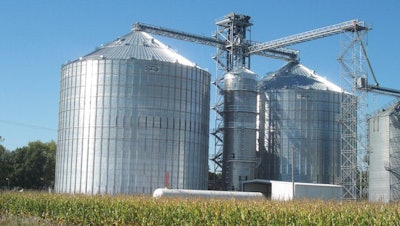
U.S. agriculture has always been a difficult sell for investment capital. It’s an industry fraught with risk, much of which cannot be controlled. Still, farmland has attracted investors in recent years, thanks to risk-mitigating factors like government programs and subsidized crop insurance, which temper both the production and price risks. But just down the road, the situation at the grain elevator is quite different. No system has been built to deploy capital to this sector of the supply chain. As a result, company ownership at the point of grain origination remains fragmented while the need for capital improvements is critical.
U.S. grain and oilseed production continues decades of growth to meet increasing demand, which requires additional storage and processing capacity. Meanwhile, the globalization of trade has created a need for grain to move to demand sources in a compressed time frame, requiring modern load-out facilities for transport. Needless to say, such infrastructure investments require significant capital. In order to compete, grain operations have options, some more palatable than others, depending on their financial situation:
- Make no change and continue to go it alone. In keeping the status quo, the business may become stagnant or face increased financial risk if maximizing debt to upgrade facilities. The operation is at the mercy of local production yields, and a couple poor years can spell trouble.
- Merge with a nearby competitor. This has been the solution of choice for many cooperatives. But will combining two weakening businesses result in one that is stronger or simply larger with the same risks and inability to expand?
- Sell to a strategic buyer and become a corporate location. Multinational grain companies have been active buyers of independent grain operations. However, selling to one means losing local identity in favor of a corporate brand, and the management in place is often unnecessary as it’s simply a point in the supply chain.
- Sell to a financial sponsor backed by private equity. This helps with immediate capital needs, but it creates the near certainty of being resold, in three to five years, to meet investor expectations.
- Partner with a holding company backed by patient, long-term capital. This provides resources for the operation to meet customer needs while retaining its identity and community ties. The company may also increase market access by becoming part of a supply chain network.
An example of this is Big River Rice and Grain, formed in 2013 when Agspring, the holding company, acquired Tubbs Rice Dryers, Raley Brothers and Bayou Grain and Chemical. The owners of these agribusinesses chose the new name. With legacies of understanding local growers and their needs, the combined operation now offers farmers more benefits so their producers and communities can flourish. Storage and drying capacity increased. A new location opened. IT systems were upgraded. Wait times for trucks decreased. Safety practices set the standard in the area.
The business of grain origination is changing rapidly, and choices made by operators today will determine the nature of their business tomorrow. The good news is there are options and time to make decisions based on what is most important to the local ownership.


















